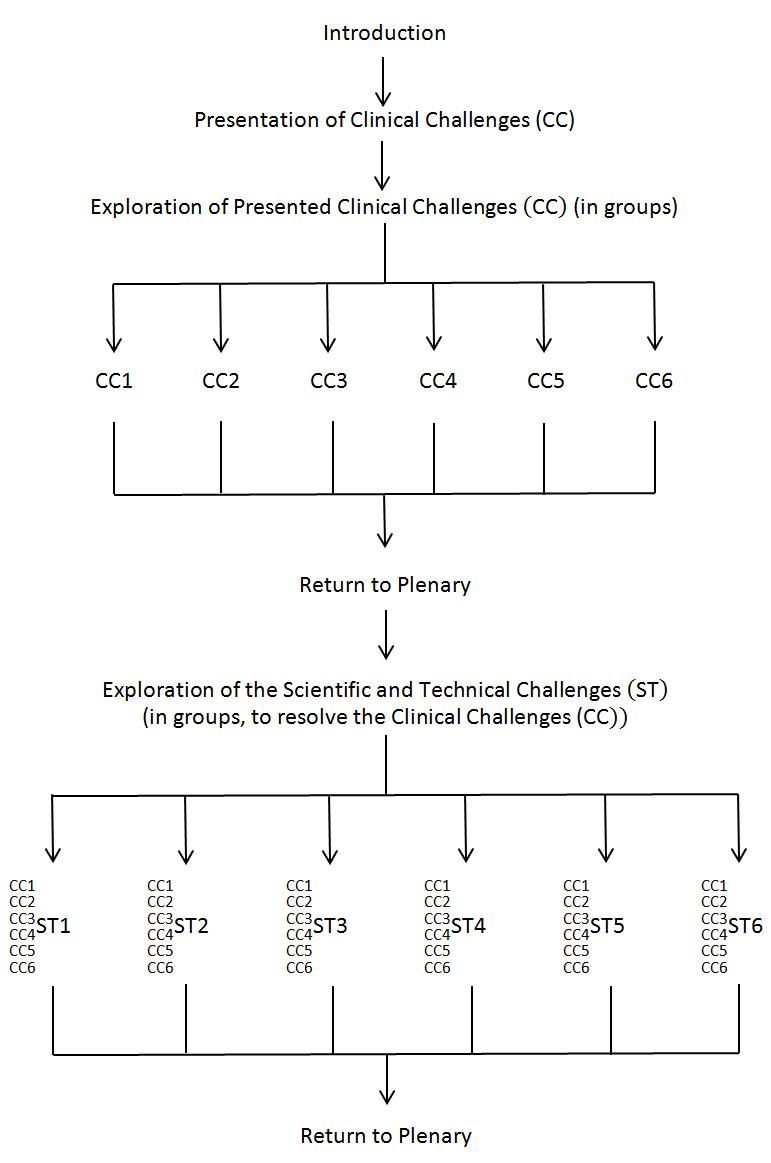Following opening addresses by the PI of DISCIPULUS (Dr Vanessa Diaz) and the Facilitator of the Meeting (Isabelle Read), each clinical challenge was presented by a clinician who was a recognised expert on the condition underlining the challenge.

After presentations of all the clinical challenges, the attendees were divided into six groups with each group uniquely representing one of the clinical challenges. During this session, attendees were encouraged to ‘dream of the future’ and make predictions for 2017 and 2032. As Ms Read put it to the attendees, “What will we be saying in 2032 that we are not saying now?” Attendees were encouraged to put their ideas on large post-it notes and paste on to a large board. Almost all the clinical challenge groups were fairly optimistic about the future for the conditions underlining their respective challenges, and almost all explicitly predicted that there would be some form of functional Digital Patient by 2032 (and the language then would reflect that). Most of the groups were clearly positive about living longer lives, however, in the case of the dementia group, the experts stressed that not everyone could live optimally to the same age as health deterioration has a rapid evolution after a certain point in life. They highlighted though that the Digital Patient has a role to play in helping us identify what that point in life is for each individual, which will in turn enable us to act accordingly.
For 2017, almost all the groups forecasted more sophisticated, better, and more efficient data systems. It was highlighted that in some areas there was still a lot of fundamental research to be done, such as early detection of high risk groups,in vitromodels, and optimising therapy, however, the consensus was that with the aid of VPH models, significant progress could be made on many of these basic questions by 2032.
After this break-out session, a plenary session followed (with lunch), and after that, there was a second break-out session, but this time, along the six scientific and technical challenges. Each scientific and technical challenge group had at least one person from each of the earlier clinical challenge break-out groups. For the second break-out session, in each scientific and technical challenge group, the attendees in the group organised themselves into smaller groups of two to four, in most cases, each small group represented one of the earlier clinical challenges. In these small groups, the attendees had to identify the issues that would need to be addressed if the future that the attendee had envisaged in the earlier clinical challenge session was to become reality.
The issues had to be along the lines of the scientific and technical challenge that the attendee was now in for the second break-out session. A simple illustration of the entire day is shown below:
Simple Flowchart Illustration of the Format of the Second Consultation Meeting
The outcome of this session will be elaborated on in detail in the Digital Patient Roadmap (provisional date of publication: March/April 2013). The putting together of the material generated in the second break-out session for the roadmap will be led and done by the attendees at the meeting. The final content of the Roadmap will be the consolidated work of the emergent discussions during the day. Done by the Digital Patient community for the Digital Patient community, chapters will be led by the experts in the associated topics and will provide a voice to the community of experts that participated in the Roadmap: https://www.biomedtown.org/biomed_town/discipulus/reception/wiki/DigitalPatientRoadmap